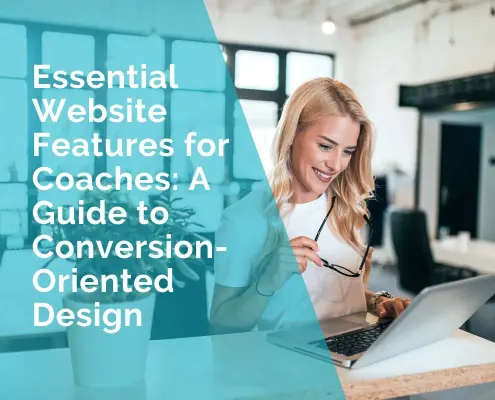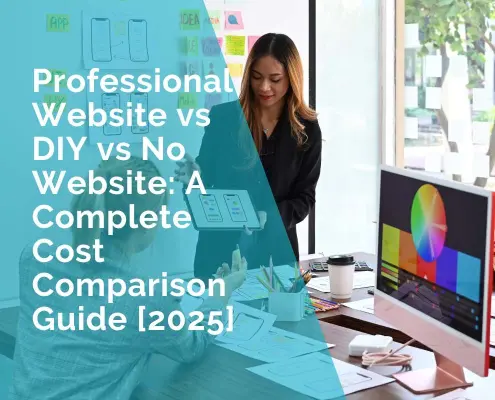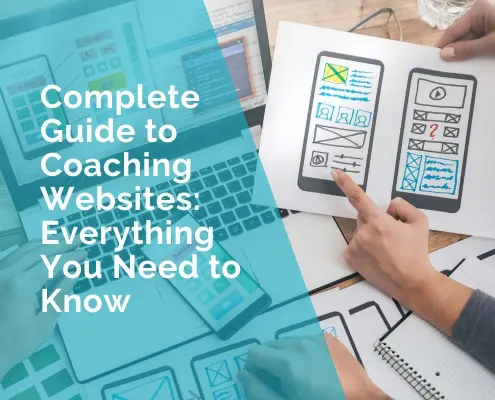How to Improve Your eCommerce Website for Higher Conversions
E-commerce success isn’t just about attracting visitors—it’s about converting them into paying customers. Optimising your website for conversions requires a combination of strategic design, user experience enhancements, and digital marketing tactics. Whether you’re a small business owner or working with an e-commerce SEO specialist, improving your website’s performance can significantly boost your sales. In this guide, we’ll explore proven strategies to optimise your e-commerce website for higher conversions.
1. Optimise Your Website for Speed and Performance
A slow-loading website drives potential customers away. According to research, a one-second delay in page load time can reduce conversions by up to 7%. A fast, seamless browsing experience is essential for retaining users and encouraging purchases.
How to Improve Website Speed
- Compress images and use modern formats like WebP.
- Minimise HTTP requests and enable browser caching.
- Utilise a Content Delivery Network (CDN) for faster load times.
- Optimise server response time and consider upgrading hosting plans.
2. Enhance Mobile Responsiveness
With more than half of global web traffic coming from mobile devices, having a mobile-friendly e-commerce website is non-negotiable. Google also prioritises mobile-optimised sites in search rankings, making it crucial for visibility and conversions.
Best Practices for Mobile Optimisation:
- Use a responsive design that adjusts to different screen sizes.
- Simplify navigation for a better user experience.
- Ensure fast-loading pages with AMP (Accelerated Mobile Pages).
- Implement mobile-friendly checkout processes with easy payment options.
3. Improve User Experience (UX) and Navigation
A well-structured and intuitive website keeps visitors engaged and increases their likelihood of making a purchase. Users should be able to find products quickly and complete their transactions with minimal effort.
Key UX Improvements:
- Use a clean, professional design with easy-to-read fonts.
- Simplify menus and categories for quick navigation.
- Add breadcrumbs to guide users through product pages.
- Include a robust search function with filters and suggestions.
4. Optimise Product Pages for Maximum Impact
Your product pages are where conversions happen. An effective product page convinces visitors to take action by offering compelling information and visuals.
Product Page Optimisation Tips:
- Use high-quality images with zoom and 360-degree views.
- Write detailed, engaging product descriptions that highlight benefits.
- Include customer reviews and ratings for social proof.
- Implement scarcity tactics like limited-time offers and low-stock alerts.
5. Streamline the Checkout Process
A complicated checkout process leads to cart abandonment. Simplify the experience to increase the chances of customers completing their purchases.
How to Reduce Cart Abandonment:
- Offer guest checkout to eliminate unnecessary steps.
- Minimise form fields and require only essential information.
- Provide multiple payment options, including PayPal and Buy Now, Pay Later services.
- Display trust signals such as SSL certificates and secure payment icons.
6. Leverage E-Commerce SEO for Higher Visibility
Higher search engine rankings drive more traffic to your website, which increases conversion opportunities. Implementing SEO strategies ensures that your products reach the right audience.
E-Commerce SEO Best Practices:
- Conduct keyword research to optimise product titles and descriptions.
- Use structured data markup for better search engine visibility.
- Improve internal linking to enhance site navigation.
- Optimise category pages for high-intent search queries.
7. Implement Trust-Building Elements
Customers need to feel confident before making a purchase. Adding credibility-boosting elements to your site can increase trust and encourage conversions.
Ways to Build Trust:
- Showcase customer testimonials and case studies.
- Offer clear refund and return policies.
- Display secure payment badges and trust seals.
- Provide accessible customer support via live chat or phone.
8. Utilise Personalisation and AI Recommendations
Personalisation enhances the shopping experience and increases the likelihood of conversions. AI-driven recommendations guide customers toward relevant products based on their behaviour.
How to Personalise Shopping Experiences:
- Implement AI-powered recommendation engines.
- Send personalised email campaigns based on browsing history.
- Offer dynamic pricing and discounts for returning customers.
- Display recently viewed and frequently bought-together products.
9. Use A/B Testing to Optimise Conversions
A/B testing helps identify the most effective design, content, and layout strategies for increasing conversions.
What to Test for Higher Conversions:
- Different CTA (Call-to-Action) button placements and colours.
- Various product page layouts and content formats.
- Different pricing models and discount offers.
- Checkout process variations to minimise drop-offs.
10. Leverage Social Proof and Influencer Marketing
Social proof plays a vital role in convincing potential buyers to trust your brand. Influencer marketing and customer testimonials can drive conversions by showcasing positive experiences.
Ways to Use Social Proof:
- Highlight user-generated content and customer reviews.
- Collaborate with industry influencers to promote products.
- Display real-time purchase notifications on-site.
- Encourage customers to share purchases on social media.
- Integrate a social media wall to showcase live customer posts and brand mentions.
11. Optimise Email Marketing Campaigns
Email marketing remains one of the highest-converting digital channels. A well-crafted email strategy can drive repeat purchases and reduce cart abandonment.
Effective Email Marketing Strategies:
- Send abandoned cart recovery emails.
- Offer exclusive discounts and personalised promotions.
- Automate follow-up emails for recent purchases.
- Segment your email list based on user behaviour.
12. Improve Customer Service and Support
Providing excellent customer support enhances satisfaction and loyalty. Happy customers are more likely to return and refer others to your store.
Customer Service Strategies:
- Offer live chat support for instant assistance.
- Implement a comprehensive FAQ section.
- Provide hassle-free return and exchange policies.
- Actively engage with customers on social media and email.
Conclusion and Next Steps
Improving your e-commerce website for higher conversions is an ongoing process. By optimising speed, user experience, SEO, personalisation, and marketing efforts, you can create a seamless shopping experience that drives sales. Partnering with an e-commerce SEO specialist can further refine your strategy and boost your online store’s success.
By implementing these strategies, your business will be well-equipped to thrive in the competitive e-commerce landscape. Start making improvements today and watch your conversions soar!
***************
Sarah Smith












